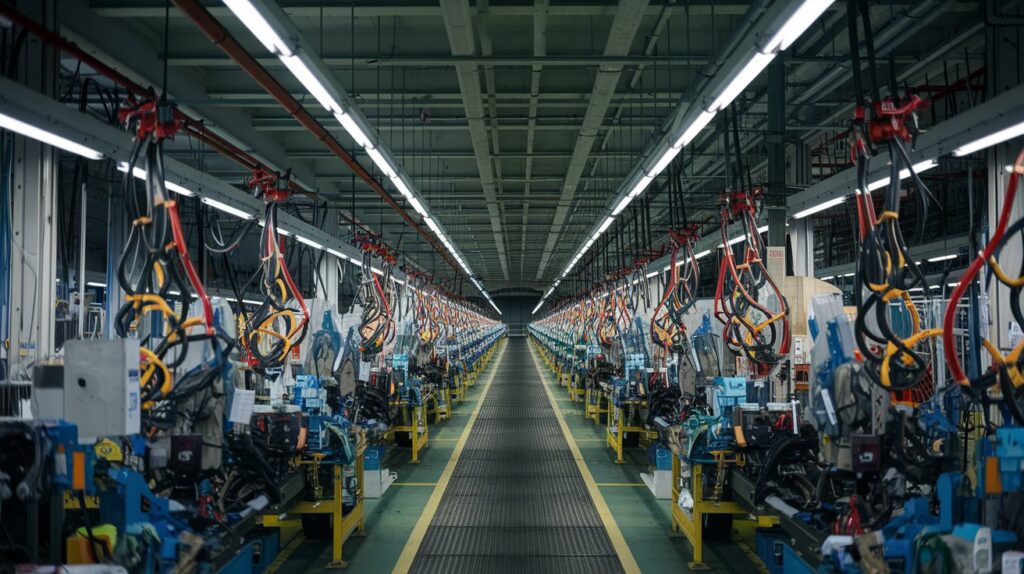President Donald Trump’s tariff plans are set to reshape the economic landscape for American consumers and businesses, impacting prices, supply chains, and trade relations. As the administration moves forward with imposing new tariffs on imports from China, Mexico, and Canada, the consequences could be far-reaching, leading to higher costs on everyday products and affecting industries across the board. To fully understand the impact of these tariffs, we will break down their effects on consumers, businesses, specific industries, and global trade.
How Trump’s Tariffs Impact Consumer Prices
Why Are Prices Increasing?
One of the immediate effects of tariffs is an increase in consumer prices. Essential goods, including electronics, automobiles, clothing, and household products, are expected to become more expensive. The increased import costs on raw materials such as steel and aluminum directly lead to higher prices for finished products.
Key Data:
- According to the Peterson Institute for International Economics, these tariffs could cost the average American household over $2,600 annually.
- Higher production costs in industries relying on imported goods will inevitably be passed down to consumers, making everyday necessities more expensive.
Table: Impact of Tariffs on Consumer Prices
| Product Category | Expected Price Increase |
|---|---|
| Electronics | 10-15% |
| Automobiles | 5-10% |
| Clothing | 8-12% |
| Household Goods | 7-10% |
The Business Sector Faces Economic Uncertainty

How Are Businesses Affected?
For businesses, the tariffs create significant financial challenges. Small and medium-sized enterprises (SMEs) that rely on imported raw materials will see higher production costs, ultimately leading to either higher retail prices or reduced profit margins.
Challenges Businesses Face:
- Supply Chain Delays: Many businesses source parts from global suppliers. Tariffs disrupt this process, leading to delays and higher costs.
- Increased Production Costs: Small and medium enterprises (SMEs) that rely on imported raw materials may face financial strain.
- Workforce Reductions: Businesses struggling with rising costs may need to reduce their workforce.
Mind Map: How Tariffs Affect Businesses
[Tariffs Imposed]
|
----------------------------------
| |
[Higher Production Costs] [Supply Chain Disruptions]
| |
[Increased Prices] [Delays in Imports]
| |
[Lower Consumer Demand] [Reduced Business Output]The Auto Industry Takes a Hit
Why Are Car Prices Rising?
The automotive sector is particularly vulnerable to these tariffs. With higher steel and aluminum prices, car manufacturers are forced to raise prices, affecting both automakers and consumers.
Key Data:
- Ford Motor Co. CEO Jim Farley recently stated that these tariffs could add ‘cost and chaos’ to the industry.
- U.S. car manufacturers depend on global supply chains, and increased material costs may reduce competitiveness.
Potential Consequences:
- Higher costs for vehicles.
- Fewer car sales.
- Potential job losses in the automotive industry.
The Agricultural Industry Faces Challenges

How Are Farmers Affected?
Farmers are also experiencing setbacks due to retaliatory tariffs from affected trading partners. The agriculture sector relies heavily on exports, and as tariffs restrict market access, American farmers are struggling to find buyers for their products.
Table: Impact on U.S. Agriculture
| Agricultural Product | Export Decline % |
| Soybeans | 20-30% |
| Pork | 15-25% |
| Corn | 10-15% |
| Dairy Products | 8-12% |
Global Trade Relations and Economic Growth
Are We Heading Towards a Trade War?
These tariffs have the potential to escalate into a full-blown trade war, affecting global markets and causing economic instability. Countries impacted by the tariffs are likely to retaliate, leading to further trade barriers that could slow economic growth.
Key Concerns:
- Stock Market Volatility: Investors are wary of long-term economic impacts.
- Potential Job Losses: If businesses struggle, job layoffs may occur.
- Global Supply Chain Disruptions: Trade agreements may be restructured, leading to delays and higher costs.
The Bigger Picture: Are Tariffs Beneficial or Harmful?
While the administration argues that tariffs are necessary to protect American industries and reduce trade deficits, economists warn that they could do more harm than good. The intended goal is to encourage domestic manufacturing, but the short-term consequences include inflation, job losses, and decreased consumer spending power.
Conclusion
Trump’s tariffs are creating a ripple effect across the U.S. economy, leading to higher consumer prices, business uncertainty, and potential job losses. The long-term impact remains uncertain, but the immediate effects are clear: American households and businesses are facing increasing financial pressures. Moving forward, policymakers must balance the need for fair trade practices with the economic realities facing consumers and industries alike.
[USnewsSphere.com / CNN]





